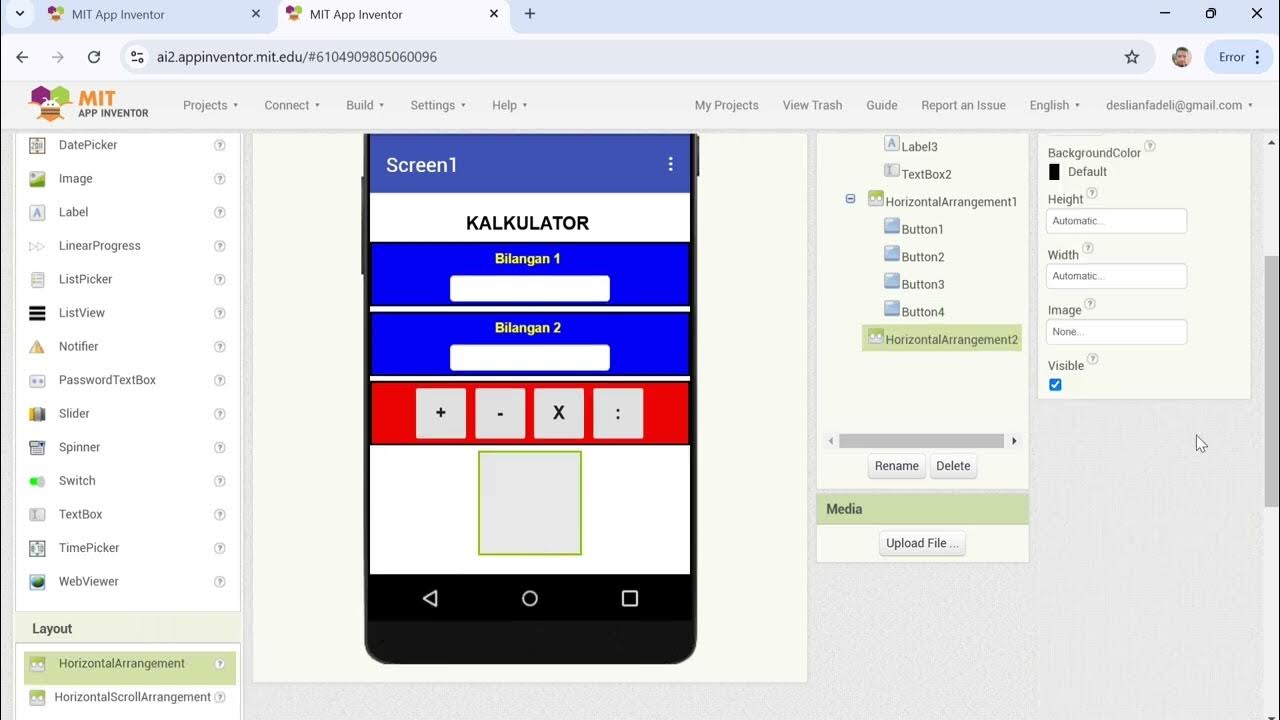How to Create a Simple Calculator using C++ Programming Language
Summary
TLDRThis video tutorial guides viewers on how to create a simple calculator using the 'Receipts' programming language, covering essential operations like addition, subtraction, multiplication, and division. It explains how users can input numbers, perform operations, and display results. The tutorial also highlights error handling, variable declaration, and checking for invalid inputs. With clear instructions and examples, this video makes the process of building a basic calculator accessible, even for beginners, and encourages viewers to engage with the content by subscribing for more programming insights.
Takeaways
- 😀 The video introduces how to create a simple calculator using a programming language, with basic operations like addition, subtraction, multiplication, and division.
- 😀 It emphasizes the ability to handle edge cases such as division by zero and validates user inputs to ensure correct functionality.
- 😀 The calculator supports both integer and floating-point numbers, allowing the user to perform operations accurately.
- 😀 Clear instructions are provided for users to input numbers and select operations from a list of available choices.
- 😀 The calculator can display the result after performing the selected operation on the entered numbers.
- 😀 A variety of mathematical operations are covered, including addition, subtraction, multiplication, and division, which the program can perform seamlessly.
- 😀 The video highlights the importance of handling exceptions like zero division and ensuring the program doesn't crash due to invalid inputs.
- 😀 The script encourages learning by showing how the calculator can be modified to include additional functionalities like finding remainders or updating the program with new operations.
- 😀 Users are instructed on how to input valid data and interact with the program through a user-friendly interface that supports both numeric and symbolic inputs.
- 😀 The program is described as simple to implement and demonstrates practical applications of variables, functions, and user input handling within the code.
Q & A
What programming language is being used to create the simple calculator?
-The simple calculator is being created using the 'Receipts' programming language.
What basic arithmetic operations will the calculator support?
-The calculator will support addition, subtraction, multiplication, and division operations.
How does the calculator handle division by zero?
-The calculator checks if the second number is zero before performing the division operation to avoid a division-by-zero error.
What is the role of the 'namespace' in this program?
-The 'namespace' is used to define and organize functions and variables within the program, allowing for better structure and clarity in the code.
What data type is used to store the numbers entered by the user?
-The numbers entered by the user are stored in variables with a data type that is compatible with numerical values, likely integers or floats.
How are the results displayed after performing an operation?
-Once an operation is performed, the result is displayed to the user, allowing them to see the outcome of the calculation.
How does the program handle user input for operations?
-The program prompts the user to enter two numbers and then select an operation (addition, subtraction, multiplication, or division), performing the chosen operation on the entered numbers.
What happens if the user enters an invalid operator?
-If an invalid operator is entered, the program displays a message indicating that the operation is not valid.
Can the program handle multiple operations in sequence?
-Yes, the program can handle multiple operations in sequence, allowing the user to continue performing calculations without restarting the program.
What improvements can be made to the calculator program?
-Improvements could include adding more advanced mathematical functions (like square roots, exponents), user input validation, and a more user-friendly interface.
Outlines

This section is available to paid users only. Please upgrade to access this part.
Upgrade NowMindmap

This section is available to paid users only. Please upgrade to access this part.
Upgrade NowKeywords

This section is available to paid users only. Please upgrade to access this part.
Upgrade NowHighlights

This section is available to paid users only. Please upgrade to access this part.
Upgrade NowTranscripts

This section is available to paid users only. Please upgrade to access this part.
Upgrade NowBrowse More Related Video

JAGO EXCELL SEKEJAP RUMUS PENJUMLAHAN, PENGURANGAN, PEMBAGIAN, DAN PERKALIAN OTOMATIS

Cara Membuat Kalkulator Sederhana dengan MIT APP INVENTOR

How To Make A Calculator In Scratch! | Easy tutorial for kids!

Build a Simple Calculator Using Python | Beginner Python Project

Membuat Kalkulator Sederhadan di Android Studio

Cara Membuat Kalkulator Sederhana Java Netbeans | jSwing Calculator
5.0 / 5 (0 votes)